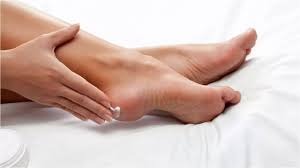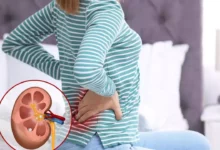How to obtain heels that aren’t cracked
Heel fissures, sometimes referred to as cracked heels, are a common foot condition that may affect individuals of all ages. The skin on your heels may get dry, thick, and sometimes even split, which can result in these uncomfortable and ugly fissures. Although they may not be very harmful to your health, they can nonetheless be an inconvenience and a cause of pain. In this thorough guide, we’ll dig into the root causes of cracked heels and examine a variety of efficient treatments and preventative methods to keep your feet healthy and smooth.
Recognizing the Root Causes
Finding the Offenders
There are several reasons of cracked heels, and identifying them is the first step in coming up with a workable remedy.
Dry Skin
Skin that is too dry is one of the main reasons why heels break. Lack of moisture makes the skin on your heels fragile and prone to breaking.
Low humidity, regular contact with water, or even specific medical problems like eczema may all contribute to dry skin.
Extended Standing
Long periods of time on your feet might put additional strain on your heels. The skin on your heels may thicken and ultimately fracture from the continual pressure.
People are more likely to develop this illness in occupations like teaching, nursing, or retail that involve extended standing.
3. Unsuitable footwear
Your feet’s health is greatly influenced by the shoes you wear. Cracked heels may occur as a result of ill-fitting or unsupportive footwear.
High heels, sandals without an arch support, and open-back footwear may make the issue worse by putting more pressure and friction on your heels.
4. Severe Weather
The impacts of extreme weather, including heat and cold, may be harmful to your skin. Your skin may quickly lose moisture in very hot conditions, while in cold weather, a lack of humidity may cause dryness.
Furthermore, unprotected exposure to direct sunlight might make the problem worse.
5. Skin Disorders
Your risk of developing cracked heels may increase if you have certain skin diseases including eczema and psoriasis. The skin’s capacity to retain moisture is often impacted by these circumstances, resulting in dryness and cracking.
Understanding the underlying reasons is crucial because it enables you to address the problem’s main cause and choose the best solutions and preventative actions.
How to Take Care of Smooth Heels
DIY Home Improvements
It doesn’t have to be costly or time-consuming to take care of your feet. You may do several efficient treatments in the convenience of your own home.
1. Dip your toes
Soak your feet in warm water as a simple yet very powerful treatment. Dead skin cells may be more easily removed thanks to the skin being softer as a result.
Consider adding Epsom salt or a few drops of an essential oil, such as lavender or tea tree oil, to the foot soak to make it even more soothing and therapeutic.
The Technique:
Warm water should be put in a tub or basin.
Add a few drops of essential oil or a handful of Epsom salt.
Give your feet a 15 to 20 minute soak.
To get rid of dead skin, gently clean your heels with a pumice stone.
Exfoliation 2.
The first step in getting rid of cracked heels is exfoliation. In addition to making your heels seem better, eliminating dead skin promotes the formation of healthy skin.
The Technique:
After soaking your feet, use a pumice stone to gently scrub your heels.
Make careful to apply minimal pressure and move in a circular manner.
Continue doing this for a few minutes until you can see that the texture of your skin has changed.
Your feet should be washed and dried.
3. Consistently moisturize
Your skin has to be moisturized often to stay hydrated and stop additional breaking.
The Technique:
Gently pat your feet dry after exfoliating.
Your heels should be covered with petroleum jelly or a rich, moisturizing foot cream.
Put on some fresh cotton socks to help keep the moisture in.
Do this before going to bed to let the moisturizer do its job.
4. Don the Proper Footwear
The appropriate footwear choice is essential for avoiding cracked heels. Your finest allies are comfy, supportive shoes.
The Technique:
Spend money on comfortable footwear with good arch support.
Open-back footwear and long-wearing heels need to be avoided.
To avoid excessive perspiration and moisture accumulation, make sure your shoes are constructed of breathable materials.
4. Rehydrate
It’s as crucial to hydrate your body inside as it is to use external remedies.
The Technique:
Make sure you get enough water each day. Maintaining the health of your skin requires staying hydrated.
Include foods high in omega-3 fatty acids in your diet, such as salmon, walnuts, and flaxseeds.
Vitamin A, C, and E-rich foods should be consumed since they help maintain good skin.
Expert Assistance
Home cures may not always be effective, in which case you should seek a healthcare provider’s advice.
1. Foot doctor consultation
A podiatrist is a kind of foot specialist who can identify the underlying reason for your cracked heels and design a treatment plan.
The Technique:
If the severity or recurrence of your cracked heels warrants a visit with a podiatrist, make an appointment.
A complete examination will be performed by the podiatrist, who may also suggest other testing.
They will provide personalized therapy suggestions in accordance with their evaluation.
2. Creams on prescription
A podiatrist or dermatologist may recommend medicinal lotions or ointments to help the fissures heal and moisturize the skin in more severe situations.
The Technique:
When using prescription creams, strictly follow your doctor’s directions.
These creams often include active substances that support skin hydration and restoration.
3. Use of Paraffin Wax
A wonderful spa service that offers deep hydration and comfort for cracked heels is paraffin wax treatments.
The Technique:
Typically, a spa or clinic would do this procedure.
Warm, melted paraffin wax is poured over your feet.
Before being removed, the wax is allowed to cool and solidify.
This medicine might hydrate you and provide comfort right away.
Avoiding Further Cracks
Once the problem has been resolved, prevention is the key to keeping your heels in good condition.
1. Consistent Foot Care
Don’t let your guard down after successfully treating your cracked heels. To avoid a recurrence, keep moisturizing and exfoliating your foot often.
The Technique:
Establish a foot care program that include frequent moisturizing and exfoliating.
To keep your heels smooth, include this into your weekly self-care routine.
2. Retain hydration
Overall skin health maintenance begins within. Drinking enough water keeps your skin healthy, particularly the skin of your heels.
The Technique:
At least 8 glasses of water should be consumed each day.
Keep a reusable water bottle with you to serve as a reminder to remain hydrated all day.
3. Opt for the Correct Footwear
The key to avoiding more heel problems is to spend money on supportive, comfy shoes.
The Technique:
Make sure the shoes you buy have enough arch support and are the right size.
Avoid putting on shoes with rigid, inflexible soles or that are excessively tight.
4. Apply Foot Balms
Specialty creams and balms for heels may help keep skin moisturized and stop dryness.
The Technique:
Regularly massage a heel balm made especially for cracked heels into your feet.
For optimal results, adhere to the product’s directions.
5. Watch What You Eat
A healthy diet has a big effects on the condition of your skin, especially your feet.
The Technique:
Include foods high in vitamins A, C, and E including almonds, citrus fruits, and carrots.
Include foods high in omega-3 fatty acids, such as walnuts, flaxseeds, and salmon, in your diet.
Cracked heels may be an uncomfortable and unpleasant issue, but with the proper care and attention, you can restore your heels to being soft and smooth. Whether you want to use do-it-yourself remedies or see a professional, the key is consistency and taking precautions to keep your heels healthy and pain-free.







